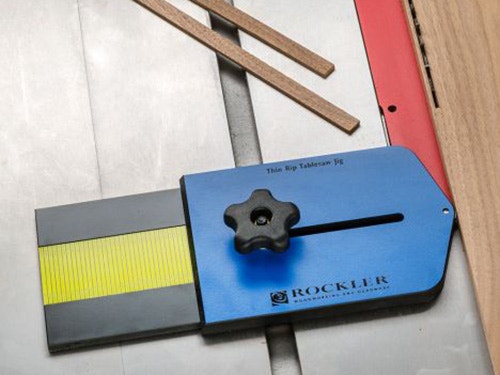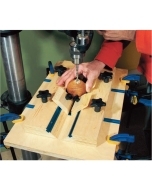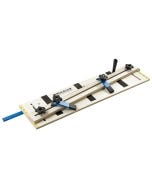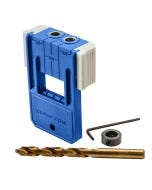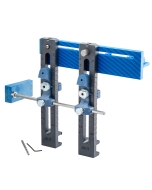Understanding Jigs and Fixtures
Most woodworkers are familiar with jigs and fixtures, but in case you're not, they're handy devices that supplement woodworking tools and machinery, usually by helping guide stock or a tool through a cutting, drilling or other machining operation.
Generally speaking, the term "jig" refers to a work holding devise that moves independently of the tool, while a "fixture" is attached to the machine with which it is used. Following from that, a featherboard is an example of a fixture, and a doweling jig is correctly called a jig. Other, more complex definitions are available. This one, which you'll find in a thorough discussion of jig and fixture terminology at woodworkinghistory.com, nails it down with the rigor of a mathematical axiom:
- Jig: a device which positions two or more objects to a location in space such that degrees of freedom of movement of the objects relative positions are limited to movement along, or rotation about, a single axis.
- Fixture: a device which secures a single object to a location in space relative to a specific reference plane and/or point by limiting at least four of its possible six degrees of movement in space (the possible six degrees of freedom of movement being movement along the x, y and z axis and rotation about said axis).
In everyday woodworking parlance, however, it's common to hear just about any work holding/guiding device called a "jig". Doing so is good enough for most people and (we think) probably a lot less confusing. But whatever you call them, once you discover how much speed, accuracy and often safety these auxiliary woodworking devices can add to your work, the practice of "jigging up" can become almost an obsession. In fact, if you stick with the shop-made variety, you may even find yourself spending more time building jigs than you do using them. Fortunately, there's an alternative to making each and every one yourself: Rockler specializes in developing affordable, effective solutions for everyday work guiding/holding challenges. Here is an examples:
Projects that call for several thin strips of wood of the same thickness come up frequently. You need to make thin, uniform table saw rips for edging, inlays, bent laminations and so forth. But the usual method of cutting them with the finished piece on the fence-side of the blade has its drawbacks. It’s difficult and potentially dangerous to push very thin pieces between the blade and fence with a push stick. And for extremely thin pieces, pushing the stock through is out of the question.
Rockler's Thin Rip Table Saw Jig lets you rip thin strips on the outboard side of the blade with the same precise repeatability of the thickness as the fence-side method. It works by giving you an indexing point on the left side of the blade that can be adjusted for thin rip cuts all the way down to zero thickness. You just lock down the jig at the desired distance from that blade – tightening one knob locks in the thickness and clamps the jig into the saw’s miter slot. After that, it’s simply a matter of butting the stock up to the jig’s ball bearing point of contact, bringing the fence up along side the stock's other edge and locking in the fence position. Repositioning the fence for each successive cut takes only a couple of seconds and results in perfectly indexed cuts. The Thin Rip Jig also works great as a single-point band saw fence, a popular alternative to a standard fence because it lets you manually control blade "drift" when cutting parts to a uniform width.
What about the investment of actual money in "store-bought" jigs and fixtures? If you're mechanically adept, you could conceivably build every jig you ever need with materials you have around the shop - supplemented by the occasional trip to the hardware store. Jig building can be a lot of fun, and in most cases you’ll save a modest amount of cash over buying the device ready-made. But not everyone wants to - or can afford to - spend their time that way. Many would rather spend their time actually working on their projects, instead of getting ready to work on them. If that sounds like you, we have a suggestion: the next time you need to jig up, check through the selection of Rockler specialty tools, jigs and jig parts first. There's a good chance we have just what you’re looking for.
Keep the inspiration coming!
Subscribe to our newsletter for more woodworking tips and tricks
